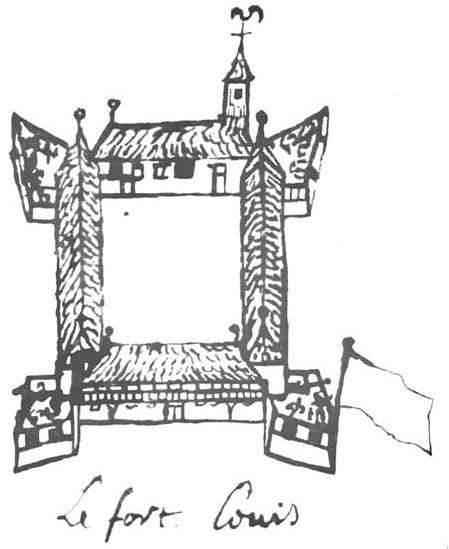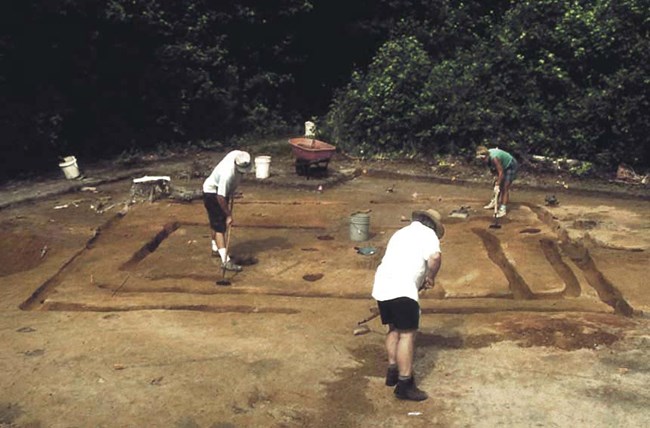
Courtesy of Center for Archaeological Studies at the University of South Alabama
The Old Mobile Site is the archeological remains of the first permanent French colonial settlement and the earliest European town on the Gulf Coast of the United States. Also known by the name of the settlement's fort, Fort Louis de la Louisiane, it was the first colonial capital of French Louisiana. The site is situated on the Mobile River, along what is now known as Twenty-Seven Mile Bluff.
In January 1702, after occupying Forts Maurepas (1699) and de la Boulaye (1700), a permanent settlement was established on the Mobile River. The town of Mobile and its fort served as the capital of French Louisiana until mid-1711, when the settlement was relocated to the present site of Mobile, Alabama. During this period, under the leadership of Governor Pierre Le Moyne d'Iberville's brother, Jean-Baptiste Le Moyne de Bienville, the French consolidated control over the north-central Gulf Coast and gained influence among the Native Americans inhabiting the interior Southeast. Old Mobile served as the economic and political center of the colony. From here, traders routinely traveled to the neighboring Mobilian, Apalachee, Tomeh, Chato, Tawasa, Chickasaw, and Choctaw villages. Delegations from the more distant tribes attended annual conferences and gift distributions at the fort. Canadian voyageurs trading with the Mississippi Valley tribes returned here intermittently to sell Native American slaves, furs, skins, and foodstuffs and to purchase European-made trade goods.
The colonial settlement area, as identified through historical and archeological studies, contained a wooden fort, a church, and an administrative center. As depicted on maps dating to 1702 and 1705, houses in the town were widely dispersed on large lots set within a formal street grid. Fort Louis was situated along the Mobile River, midway through the town. At its peak, Old Mobile contained between 80 and one 100 structures, most of which were homes for the approximately 350 inhabitants. Archeological investigations by the Center for Archaeological Studies at the University of South Alabama, ongoing since 1989, have identified the remains of private homes, a blacksmith shop, taverns, and barracks.

Courtesy of Center for Archaeological Studies at the University of South Alabama.
The Old Mobile Site can be considered a French colonial counterpart to the English settlement at Jamestown, Virginia. At both settlements, colonists from different European societies first adapted to a new environment and unfamiliar Native American tribes. Historical and archeological research at Old Mobile may reveal how the French-Native American colonial frontier society developed and evolved during this initial period of colonization, just as the two disciplines have contributed to the understanding of English colonial society in the Chesapeake.
The Old Mobile Site is considered nationally significant as an outstanding example of French colonization in the Gulf Coast area; for its association with significant French colonial historical figures such as the Le Moyne family, Charles Levasseur, Louis Juchereau de Saint-Denis, and Henri de Tonti; and for its demonstrated and potential archeological significance. Its archeological significance is based on its association with the beginnings of French colonization of the Gulf Coast, and the high degree of integrity of the archeological deposits, even with some disturbance at the eastern edge of the site due to recent industrial operations.
The Old Mobile Site was listed in the National Register of Historic Places on May 6, 1976. It was determined eligible for designation as a National Historic Landmark by the Secretary of the Interior on January 3, 2001.
Last updated: July 24, 2018
